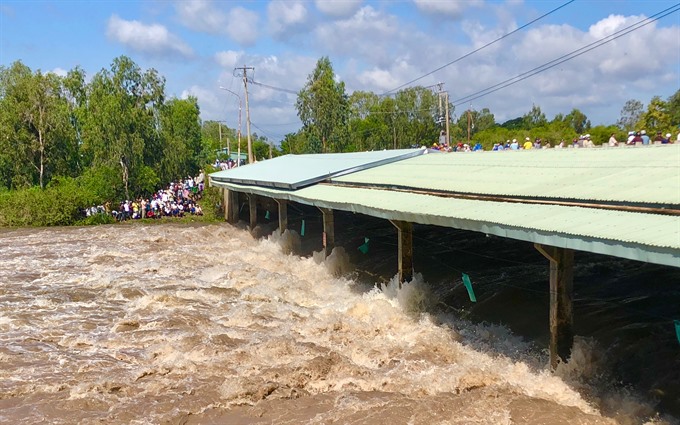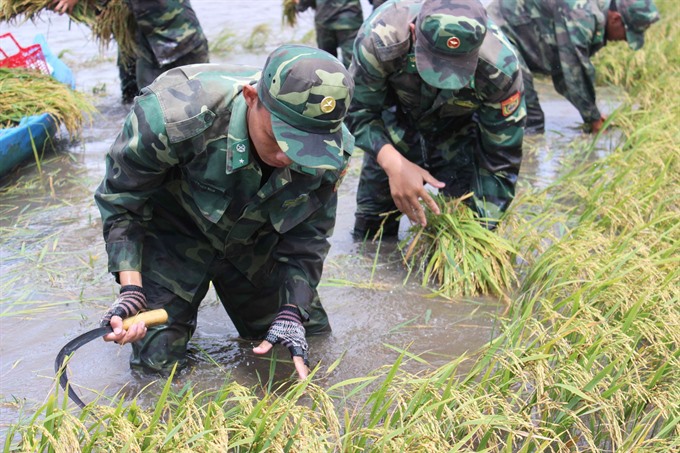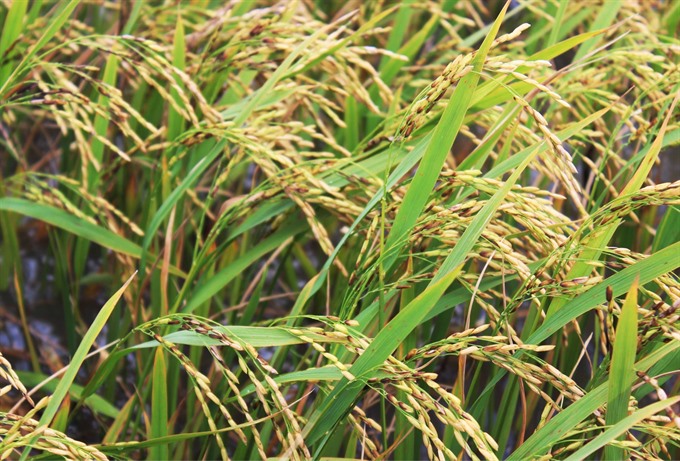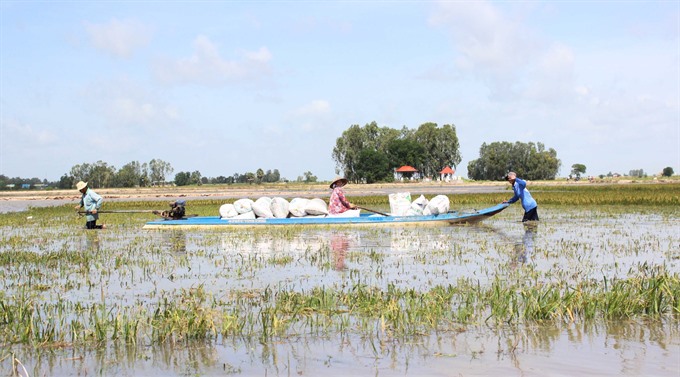.jpg) Society
Society

" />The Cửu Long (Mekong) Delta province of An Giang released water from the Tha La and Trà Sư dams in Tịnh Biên District on Friday morning to ease the flooding in the Long Xuyên Quadrangle.
 |
| Water is released from the flood-regulating Tha La dam in Tịnh Biên District of An Giang Province on Friday. —VNS Photo Hoàng Nguyên |
By Hoàng Nguyên
AN GIANG – The Cửu Long (Mekong) Delta province of An Giang released water from the Tha La and Trà Sư dams in Tịnh Biên District on Friday morning to ease the flooding in the Long Xuyên Quadrangle.
According to Trần Anh Thư, director of the province’s Department of Agricultural and Rural Development, the release from the two dams is done every year to regulate flooding in the area, which includes An Giang and Kiên Giang provinces and Cần Thơ City.
“We usually release water by the end of August or when the water level (outside the dams) exceeds 3.8m.”
The level outside the Tha La dam has exceeded 4m while at Trà Sư it is 3.9m.
He said local authorities had discussed and reached agreement with their counterparts in Kiên Giang and Cần Thơ and informed local residents three days in advance about the water release.
Thư said the water level in paddy fields was expected to go up by 20cm in Kiên Giang and 30-35cm in An Giang as a result of the release, 10cm higher than last year.
“At this level, floodwaters do not have much of an impact on the agricultural activities of people in the downstream area.”
He said several studies done by Cần Thơ University and other research institutes proved that the sediments brought by floods do not contribute much to soil fertility.
“But the most important thing is that the release of water will help bio-diversity, reduce pests and pollution in paddy fields and give the soil a rest [before the next crop].”
The Tha La and Trà Sư dams were built in 2000 and have deteriorated over these years, which has affected their flood regulation capabilities.
The province plans to build concrete sewers to replace the dams.
Construction is expected to start at the end of 2018 and take one year.
 |
| Border guards in Vĩnh Gia Commune in An Giang Province’s Tri Tôn District help farmers harvest their rice after floods came early to the delta this year. —VNS Photo Hoàng Nguyên |
Joint flood response
The release of water from the two dams is also expected to reduce flooding in rice paddies in Tri Tôn District of An Giang, where around 2,000ha of rice crop face the threat of inundation.
According to Phạm Hoàng Bảo, deputy chairman of the Vĩnh Gia Commune People’s Committee, on Thursday 79ha of rice crop in the commune — in Tri Tôn — was destroyed after an embankment burst two days earlier.
Most of the rice had been due for harvest in just 10 days.
He said another 180ha near the commune’s border with Cambodia faced a very high risk.
The crop is 82-85-days old and farmers usually start harvesting from the 90th day.
Bảo said in this year’s autumn-winter crop the commune had planted a total of nearly 2,700ha of rice, 1,500ha outside embankments, similar to last year, though local authorities regularly warn farmers about the risk of early and high-rising floods.
“We had told them to reduce the area under the year’s third rice crop this year but there was little reduction.
“The reason was that farmers enjoyed really good harvests in the previous winter-spring and summer-autumn crops and rice prices were high.
“Besides, people from other places also came and rented land from local farmers who did not grow the third crop and grew rice.”
He said local authorities have liaised with the border guards in Vĩnh Gia Commune to help farmers harvest 180ha of rice in high-risk areas.
 |
| Unripened rice cannot fetch good prices for farmers in Vĩnh Gia Commune, who had to harvest too early because of floods. —VNS Photo Hoàng Nguyên |
 |
| Farmers in Vĩnh Gia Commune carry sacks of wet unripe rice home. —VNS Photo Hoàng Nguyên |
According to Senior Lieutenant-Colonel Nguyễn Văn Đỡ, political commissar of the Vĩnh Gia Border Guard, his men had worked with the local militia to help farmers harvest their rice early and reinforce embankments.
“We have border guard officers and militia teams posted round the clock near the embankment.
“We send 10-15 officers to take turns to monitor and work on paddy fields as we still have the responsibility of safe-guarding the border.”
On Thursday the helpers worked on the field of farmer Trần Văn Nhật, who planted 2.3ha of rice.
He said he had harvested around 0.6ha so far with the output being 60-70 per cent, meaning 30-40 per cent had been destroyed by the floodwaters.
He had spent VNĐ15-16 million (US$644-687) per hectare but did not expect to earn any money from the crop since the unripe rice would not fetch good prices.
“I have not sold the rice, so I do not know how much they would have paid for it. But I heard from my neighbours they had been selling their rice for VNĐ1,000-2,000 per kilogramme. At that price, it is a complete loss.”
Border guards in Kiên Giang Province have also been giving a hand to rice farmers in border districts such as Hòn Đất, Kiên Lương and Giang Thành, where around 40,000ha of 60-70-day old rice is expected to be badly affected by the floodwaters.
Nguyễn Văn Tâm, director of Kiên Giang Province’s Department of Agricultural and Rural Development, said the release of water from the two dams in An Giang would surely have an adverse impact on the rice.
But even otherwise the rice crop would not have escaped unscathed since the floods would peak around September 12-14 while the rice would not ripen for another month, he said.
His department is working with border districts and relevant agencies to reinforce the dyke system, prepare pumps to clear water out of paddies if needed and call on locals to keep an eye on the water level and join hands for flood mitigation work. — VNS


.jpg)

